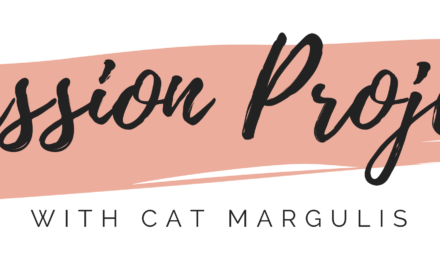A job description for a professional content creator might look like this:
Seeking: Creative and resourceful self-starter ready to work 60 hours a week, including nights and weekends
Duties include:
- Researching, writing, shooting, and editing online content
- Programming and distributing across platforms
- Analyzing data
- Performing search engine optimization
- Handling accounting and tax-related tasks
- Schilling for brands
- Catering to the whims of needy strangers online
Pay starts at -$10K a year.
“The life of a content creator seems glamorous, but it’s actually pretty tough,” says Holiday Kinard, founder of Kinard Creator Services, which provides fractional COO services to creators. At CEX, Holiday shared how to help make the life you’ve chosen a little easier by doing these five things.
1. Reframe your thinking: Don’t view yourself as a professional content creator. Think of yourself as a media company founder. “Being a content creator sucks, but being a media company founder is flexible and fulfilling,” Holiday says.
Adopting the entrepreneurial mindset shifts your vision so you focus on the business, not on the daily grind of creating content. It’s something that even the most successful professional content creators are doing. Holiday points to Matthew Patrick, who semi-retired from his wildly successful YouTube channel and identity as MatPat, to be the co-founder and CEO of Theorist Media.
“A content creator doesn’t get promoted to media company founder. They just choose to start acting like one,” Holiday says. “This simple reframe leads to different actions and a lot better outcomes.”
2. Think and plan strategically: Content creators execute. Media company founders envision what they want the company to be and what will get them there – the content to make, where to publish it, and when to share it.
Every year, set goals. Then map out a plan to achieve them. For example, if you want to increase revenue by 10% this year (goal), how will do you do that (plan)? Will you need to make more content? Will you need to add a revenue stream? How will you execute that? Will you hire someone?
Every quarter, assess progress toward those goals and plan. Are you getting closer or further away? Do you need to course correct?
Every month, build a release calendar and review finances. Schedule the what, where, and when of your content and the who’s going to do it. Even if you do timely content and don’t know the topic yet, add placeholders on the calendar.
When you do this, look backward to see what worked well (and what didn’t) from last month’s content and apply lessons. Look ahead for major holidays and events related to your content tilt and incorporate those into your content.
Evaluate your finances monthly by creating a profit-and-loss report so you know what money is coming in from where and what money is going out for what. Look for any surprises. If you spent 10 times more software, do you know why. “It’s like your business report card,” Holiday says.
Every week, make a schedule to execute the calendar and categorize your financial transactions. By labeling what you spent and what you earned, you’ll be ready for next month’s profit-and-loss statement.
3. Grow the team: “Creators can start expanding their team much earlier than they think,” Holiday says, noting it’s once again the difference between professional creators and media company founders.
“A professional content creator asks if they really need to hire someone else to do a task. This makes sense because they see creating content as their only job,” she says.
“A media company founder asks if they actually need to do the task themselves. They understand the amount of things they could be doing is endless.”
Options could be fractional executives, commission-paid professionals, contractors, virtual assistants, or even AI tools. Then, you can spend the newly freed up time on more strategic activities.
4. Build a system: “Write down how you do stuff. You need an instruction manual,” Holiday says. “It allows you to separate the planning from the doing.”
In a Google Doc or other user friendly format, document how to do everything that needs to get done. Don’t think you only need this instruction manual when you hire someone. Write it down now as a solo entrepreneur for a couple of reasons. First, it can help you better understand all that you’re doing (and what someone else might be better doing.) Second, when you’re ready to hire, you’re already busy and won’t have time to create it.
The documented system should detail the people, content, performance/data, schedule and finances.
And no, Holiday says, knowing the system in your head or having them on sticky notes around your desk doesn’t cut it.
5. Change your profile: OK, Holiday didn’t suggest this, but it’s a natural takeaway from her presentation. Go to your LinkedIn profile, your website’s about page, and your social media bios. Change the text to rebrand yourself as a media company founder. Practice saying it out loud, so the next time someone asks, “What do you do?” You’re ready with the answer: “I am a media company founder.”
About the author
Ann regularly combines words and strategy for B2B, B2C, and nonprofits, continuing to live up to her high school nickname, Editor Ann. An IABC Communicator of the Year and founder of G Force Communication, Ann coaches and trains professionals in all things content. Connect with her on LinkedIn and Twitter.










